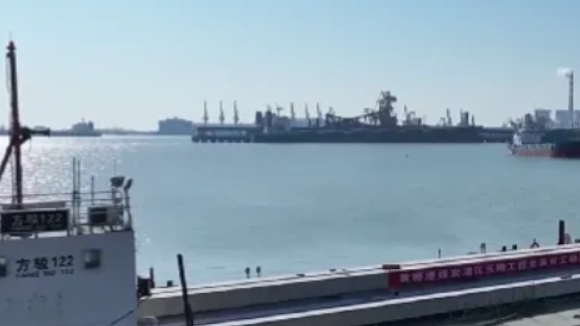According to analysts at Sea-Intelligence, the total EBITDA (earnings before interest, taxes, depreciation, and amortization) for the container shipping industry in 2024 is projected to reach $60 billion, making it the third-highest figure in the industry's history and the highest level since the COVID-19 pandemic.
Renowned container market analyst and operator of Blue Alpha Capital in New York, John McCown, expects the liner industry to remain profitable this year, although profits are expected to decline to below $10 billion.
In the latest market report, McCown wrote, "Due to the continued downward trend in prices this quarter, performance in the first quarter of 2025 is definitely expected to be lower than in the first quarter of 2024."
If tariffs are implemented, the negative demand shock could turn into a supply shock, leading to inflationary pressures.
He acknowledged that the tariff situation triggered by the new Trump administration in the U.S. "has injected more uncertainty than ever before."
The Bank for International Settlements warns that after years of high inflation and high interest rates, the uncertainty brought by Trump’s promises to impose tariffs and lay off workers could threaten the global economy's soft landing. The report states, “Tariffs, U.S. fiscal policy, immigration, and regulatory policy uncertainties... are like a negative demand shock. They negatively affect spending and investment, and we have already seen some signs. If tariffs are imposed—some countries have already done so—the negative demand shock could turn into a supply shock and lead to inflationary pressures.”
Container spot freight rates have been declining throughout 2025. Since the beginning of the year, the Shanghai Container Freight Index has fallen by 47%.
According to Drewry's data, prices from Asia to Northern Europe, Asia to the Mediterranean, and across the Pacific to both U.S. coasts are now lower than at any point in 2024.
However, compared to the levels just before the Red Sea shipping crisis in mid-December 2023, prices from Asia to Northern Europe have still increased by 74%, from Asia to the Mediterranean have increased by 96%, and prices for the trans-Pacific routes to the U.S. East and West coasts are still up by more than 40% compared to the low points of late 2023.
Clarksons Research commented in a weekly report, “The continued softness in the spot market is set against a backdrop of lower-than-usual cargo volumes after the Spring Festival, intensified competition between liner companies due to alliance restructuring, and a series of tariffs announced by the U.S. and its trade partners, which has brought widespread uncertainty.”
As accurately predicted by Danish giant Maersk in its February annual report, liner companies' profits in 2025 will be precarious, largely beyond the control of shipping companies — the situation in the Middle East is expected to be the determining factor between profits and losses.
In February, Maersk reported its third-best fiscal year ever, with EBITDA of $6.5 billion in 2024. The Danish giant forecasts a global container volume growth of around 4% in 2025. However, according to Maersk, the huge dividing line between profit and loss this year will be centered around the Red Sea. Maersk’s forecast for EBITDA in 2025 ranges from zero to $3 billion, depending on whether the Red Sea is open by mid-year or year-end.
The Houthi group in Yemen had previously suspended attacks on merchant vessels, but on March 15, the U.S. took large-scale military action against the Houthis. Afterward, the Houthis launched an attack on the U.S. aircraft carrier Harry S. Truman and its accompanying vessels in the northern Red Sea, declaring that all U.S. aircraft carriers and warships would be targeted. The military confrontation between the two parties has escalated, casting a large shadow over the Red Sea situation.

Last
Under Tariff Storm, South Korean Giant Announces "Emergency Management" State! Implementing "Voluntary Retirement" for Employees and "Executive Salary Cuts"
Under the dual pressure of rising global trade protectionism and intensified geopolitical competition, South Korea's steel industr

Next
China's Largest Coal Transport Port Begins Fourth Expansion, Plans to Add Four 70,000-Ton Coal Loading Berths
Against the backdrop of a deep adjustment in the global energy landscape and mounting domestic pressure on energy supply security,




